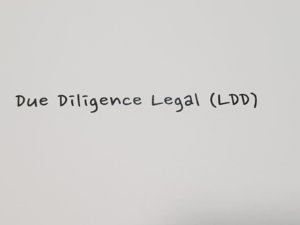
26.03.2021
Redhibitory action, hidden defects and different performance
What is the redhibitory action? What are the requirements of hidden defects? In an acquisition, do all hidden defects give right to claim? What is the remedy for breach of contract? How does the latter differ from the redhibitory action?
 Por
Cobo Aragoneses, José Luis
Por
Cobo Aragoneses, José Luis Do all the hidden defects in an acquisition give the right to claim? What actions can be taken? When do they expire?
1.-What is the Redhibitory Action?
The redhibitory action comes into play in those situations in which we find hidden defects in the good object of our purchase-sale. In this type of situation, the buyer is entitled to exercise this action, regulated in article 1486 of the Civil Code:
“In the cases of the two previous articles, the buyer may choose between withdrawing from the contract, being paid the expenses he paid, or lowering a proportional amount of the price, as judged by experts.”
For that matter and according to the above-mentioned article, the buyer will be granted two different actions that are perfectly compatible. He will be able to withdraw from the contract with the corresponding payment for the expenses incurred. This would be the exercise of the redhibitory action, and may be accompanied by an indemnity for damages. It is also possible to choose for a reduction of the price, which is what we know as the quanti minoris.
The redhibitory action is conducted only through the Administration of Justice. The redhibitory action requires proving fraud, that the seller acted in bad faith. This means that the seller knew the defects of the thing and that he decided not to manifest them before the sale took place. It is important to know that this action will be disqualified for the purchaser 6 months after the goods delivery (art. 1490 CC).
“If the seller knew of the hidden defects or defects of the thing sold and did not manifest them to the buyer, the buyer shall have the same option and shall also be compensated for damages, if he opts for rescission” (art.1486 CC).
At this point, you may be wondering what are the hidden defects that we have mentioned so far, which brings us to our next topic.
Unfortunately, this quiz has a limited amount of entries it can recieve and has already reached that limit.
2.-What are hidden defects?
When we talk about hidden defects, also called redhibitory defects, we refer to those defects that can have the thing object of the sale and that have to fulfill a series of requirements. These requirements are the ones that will allow us to qualify the defects of our purchase as hidden defects and to exercise the redhibitory action successfully. These have been repeatedly stated by the Supreme Court, as for example in the STS (Supreme Court Sentence) of October 17, 2015, and are as follows:
- The defects must be hidden: this means that they are not recognized or easily recognizable by the buyer.
- It must be a defect present prior to the sale: this is so because the seller is not liable for defects that have occurred after the sale. The thing has to be delivered in the state in which it was when the contract was perfected. This is the reason why the buyer must not only prove the existence of the defect, but also that it existed at the time of the perfection of the contract.
- The defect must be serious: that is to say, the defect must involve a certain importance. In this sense, if the buyer had known it, he would not have acquired the thing or would have done so paying less for it.

Si te ha interesado este artículo no dudes en leer:
Legal Due Diligence
3.- Remedy action or compensation for breach of contract?
In view of the aforementioned case, in which our provision has hidden defects, and having seen what are the requirements for them to be met, we must take into account that it is not the only case in which we can find ourselves. Because it can happen that the thing is totally unfit to satisfy our interest as buyer. In these cases, in addition to setting it as redhibitory vice, it can also be configured as “alud pro alio”. We find ourselves in this second situation when there is a complete non-compliance due to the inability of the object. In this way, it has been delivered a different thing to the agreed one, which is evident when there is a serious lack in the qualities of the delivered good. This allows us to consider that we are facing a breach of contract, as the good is unsuitable for the purpose for which it was intended.
In this sense, it must be clear that the unfitness of the object for the use to which it should be destined means breach of contract and not redhibitory vice. But also that both figures are, as case law has repeatedly admitted, compatible. And their essential differences are reduced to the cause of action and the limitation periods.
How do we distinguish between the two cases?
The SC follows two different ways: It resorts to the distinction between defective performance and different performance, comparing the hidden defects to the deteriorations or flaws in the quality of the supplied objects that hinder the usefulness of what has been acquired. Thus leaving the denomination “aliud pro alio” for those services that are completely useless for the purpose proposed in the sale.
Therefore, and by way of synthesis, when are we dealing with hidden defects and when are we in a case of a different performance? We will speak of defective performance when the delivered thing contains elements diametrically different from those that we had agreed. This situation is different from the one we would find if we speak of a different performance (“aliud pro alio”), in which the object sold is totally unfit for the use for which it was intended.
4.-Conclusion
If after the sale and purchase, my interest as a buyer has not been satisfied, I will have to analyze the delivered service in order to decide which solution is in my best interest. If the delivered service is defective, that is to say, it has defects that are hidden, pre-existing and serious, I have 3 options available to me.
I can choose a claim for performance, requiring the seller to remedy the defects in the performance.
I can opt for a quanti minoris, which will allow me to carry out a reduction of the price of the performance to the extent that it is defective. But in addition, I can also opt for the redhibitory action, which will allow me to withdraw from the contract with the corresponding payment for the expenses incurred, in addition to the corresponding compensation for damages. This action will have a prescription period of 6 months since the thing has been delivered.
But in addition, if the performance received is very different from the agreed one, we will choose the “aliud pro alio”. It is a different performance wherefore what has been delivered to us is unfit to fulfill the purpose for which the performance is intended. In this sense, we would be facing a case of definitive breach of contract, with its corresponding consequences and remedies.
If this article has been of interest, we also suggest you to read the following article published on our website: Order for payment procedure.
Contacto No te quedes con la duda, contacta con nosotros. Estaremos encantados de atenderte y ofrecerte soluciones.










